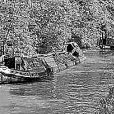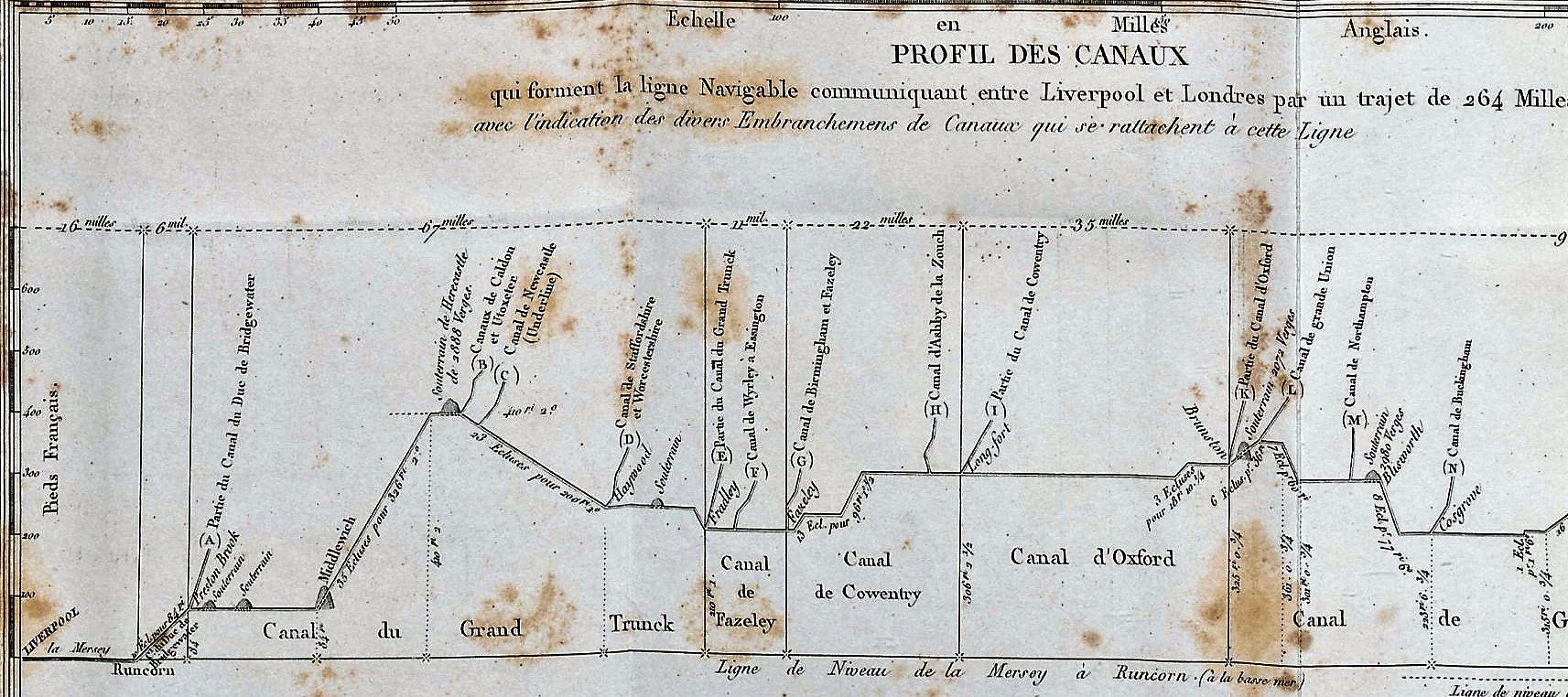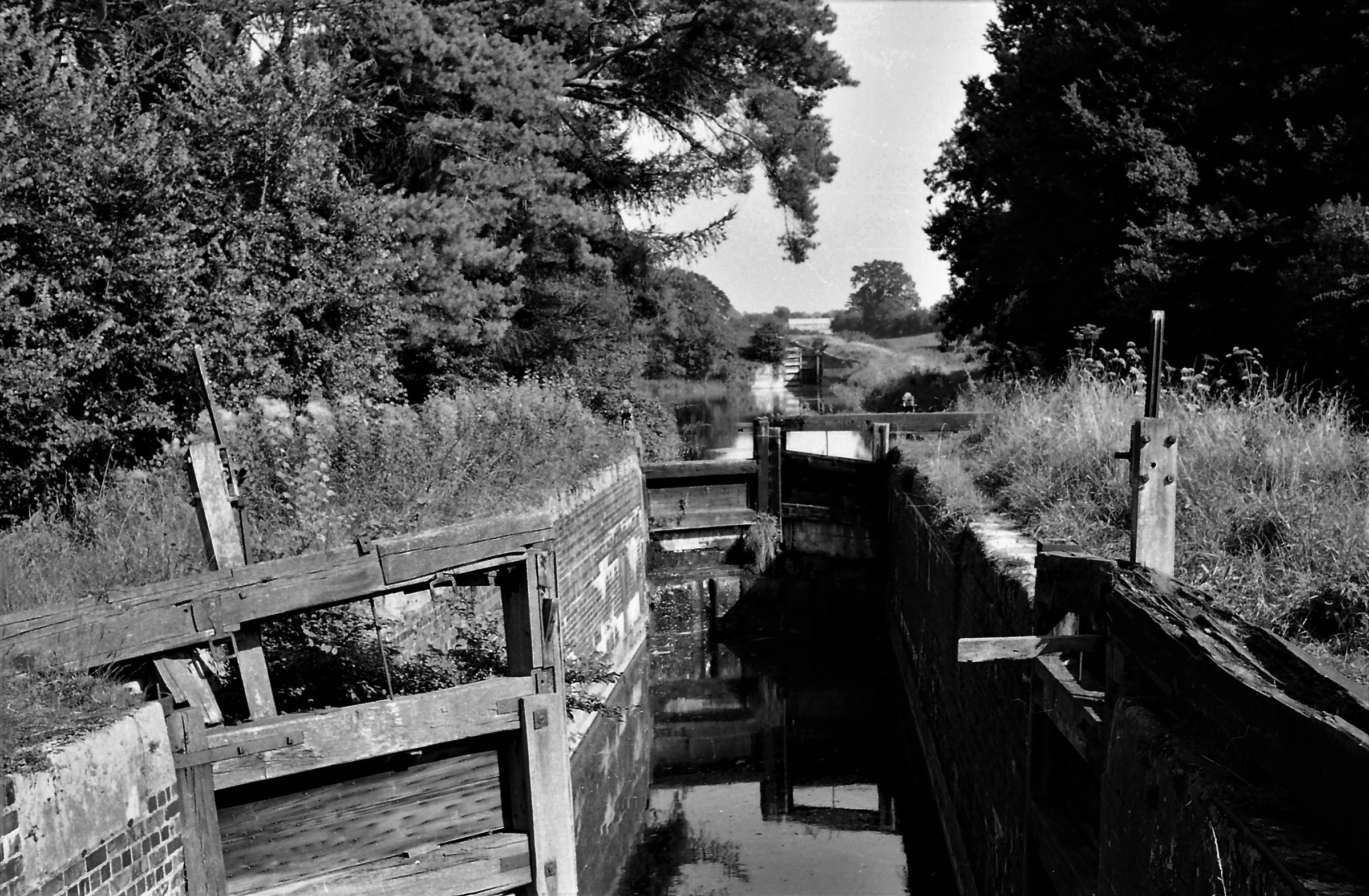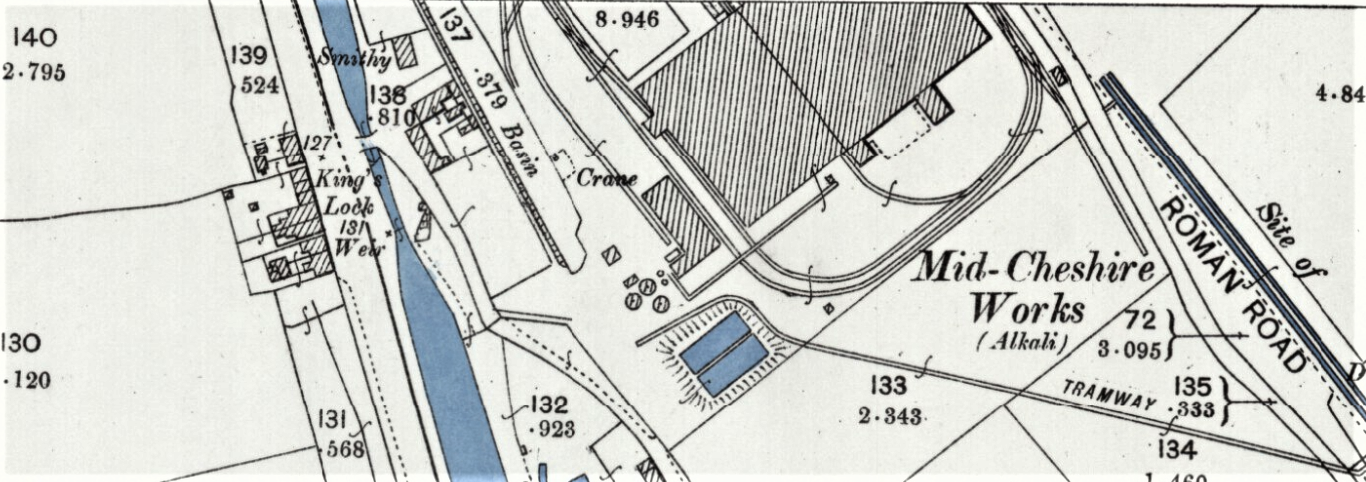-
Posts
3,397 -
Joined
-
Last visited
Content Type
Profiles
Forums
Events
Gallery
Blogs
Store
Everything posted by Heartland
-
That is indeed a useful map, and one that shows the journey flyboat from Preston Brook was required to take to reach London at the time both the Grand Junction Railway and the London and Birmingham Railway were nearing completion. It should be noted that these rival railway schemes were laid for considerable lengths on stone blocks and iron rails, which was a certain handicap until engineering of these routes were improved. Lock flights and tunnels were inevitable delay points for fly boat operation, yet it continued into the railway era and much later. Looking at the map in closer detail the steepest climb was the Trent & Mersey from Middlewich to Harecastle With the Grand Junction having two major summits with climbs and descent of a more gradual nature: It should be born in mind that canal carriers did have alternate routes to choose from, by 1837, where climbs and descents proved easier
-
I was curious to know in what circumstances the Witch Barge was to make the voyage to France. Did the account quote any sources or was it just something passed down the generations that was elaborated upon. Travelling to Cardiff was a challenge in its own right, with the Owner having to negotiate the shoals in the Severn Estuary
-
I am sure there are many people like BWM who have a concern for others. Yet for those that are walking along the towpath, a bicycle approaching from behind without warning, that is the sound of a bell, can lead to surprise, or even shock. It has led to the pedestrian tripping over ropes, or bollards, stepping into muddy parts of the path or even into a hedge in order to get out of the way. It believe the CRT code makes it clear that pedestrians do not have to literally jump out of the way to allow a cyclist to pass. It is THEY who have the right of way. As a matter of courtesy it is often the case that they do, once a cyclist is seen, but to force a path through, believing the cyclist has the right to do so, as can be seen on Birmingham towpaths, in my opinion is wrong.
-
I wrote to Richard Parry on the subject of cyclists on towpaths including the topic of cyclist licensing and the return of the barriers on the towpath in Birmingham. It is the view of the CRT that few cyclists cause concern, most either slow down or dismount when needed. The CRT are keen to make the waterways available to all and believe the CRT code is obeyed by the majority. There is nothing in their present set up that will allow them to introduce a registration system or the staff numbers there to implement it. Richard is also of the opinion that such tactics would drive the leisure cyclist away from the canals. No mention was made of the barriers in Birmingham
-

Leeds and Liverpool - Longest UK Canal?
Heartland replied to David Schweizer's topic in General Boating
It would be an interesting exercise to count up all the Birmingham Canal Navigations mileage, which I recall should exceed both the respective lengths for the GU and LL. Whilst each constituent waterway was of lengths that ranged from a fraction of a mile to lengths of 20 or even 20 plus miles. The combined lengths recorded in the published 1919 distance tables seem to be more. -
Surely BWML is as asset to CRT, that should accrue revenue. Selling it off is like leasing off, or franchising, the more profitable canals ! Ye gods what a thought.
-
I noticed on the north side of the A46 after passing the Windmill and heading west, a wooden boats hull, off the road, near Hykeham, which may be a keel. Has anybody seen that boat lying there whilst on their travels
-
There was a plan for a link from the Great Ouse to the Nar. Progress on this scheme appears to have slowed down. Is there a future, I wonder.
-

Leeds & Liverpool Closed For Cruising
Heartland replied to Alan de Enfield's topic in General Boating
Yes two Gargraves, one must be the chippy, which I have always found closed. Still the water issues at Gargrave is not new, i believe. -
Cyclists on towpaths have been discussed in other threads. I personally am unsure about the statement that "Sustrans are an integral part of towpath strategy, and importantly they have been in the charity/funding sector for years". Cyclist are one of a group of others (walkers, fishermen and boaters) who use the towpath. Allowing cyclists the freedom to do as their please can be viewed as positive discrimination. If they, as a group, followed the CRT code, then there would be no issue. Regrettably there are a hard core of cyclists who do not. It may be a negative statement to say they are driving others off the waterways, but a positive approach would be to reinstate the barriers and restrict where cyclists can go. Waterways are about leisure these days and the ability to explore, look at the heritage and appreciate the diverse ecology found on the waters edge. Those that do, cannot enjoy the people who pass them at speed and make any visit to the navigation a potential misery.
-
There was a time when some Kennet & Avon locks were somewhat disused and there was no chance, like now, to assist a boat through as this 1968 view shows:
-
Well at least campanology is ap pealing- glad your boat is ok. A few years ago Steve and myself hired a boat from Anderton we had a problem with that craft as it was leaking water into the inside from the heating system. It had an automatic pump that was working overtime-after having it checked out, we returned to the boatyard at Anderton for repair and a a replacement part.
-
As one aim of the logo change was to make the more public aware of the CRT, especially as an appeal to the younger person, I do wonder if the expense of changing all signs on the waterways owned by the CRT has been worth it. The figures quoted for new volunteers do not indicate an age profile nor if the volunteer numbers have increased since the change of logo.
-
It seems the Trent & Mersey continues to have operational problems. It must also be a concern for the hireboat companies, which now have limited choice options for their customers.
-
May be the Government can invent "OFCAN" to regulate the canal operators.....
-
System 4-50 has raised an important issue, which is should the inexperienced be allowed to work locks. In this modern world of health and safety requirements, there is a case for the canal owners, be it CRT, Peel Ports, IWA etc to have rules and regulations in place and maybe the signage might be more prominent where it exists. Canal guides such as Nicholsons do provide instructions for lock procedure. Hire boaters are generally briefed by the boat yard and there are now much more information available on the internet which modern phones can access.
-
Thanks, I must have encountered more that one volunteer on my travels in recent times. Still having one person may still be enough for the novice boaters like those who hire boats, or come onto the waterway for the first time on schemes such as time share. I am sure experienced boaters like Mike, have no need of the attentions of volunteers, and the challenges of going from lock to lock are part of the enjoyment of being on the waterway. Yet being old enough, I can remember times of when locks were not kept in the best repair, where some paddle gears were faulty and gates leaks so bad it took an age to pass through.
-
A key point of these discussions has been the dangerous nature of the lock. Those who look at canal history will agree that accidents and fatalities happen on the waterway and especially at locks. The boating community has lost some very experienced members in this regard. Setting locks for boaters through opening gates is often a kindness, as well as closing them as the boaters proceed on their way. Working paddle gear is a skill that has to be learnt. For heritage reasons canals regularly retain types of paddle gearing that have that heritage link. A case in point is the Calder & Hebble where a spike is needed to work the gear rather than a windlass. Those that volunteer at Locks, should have the appropriate training and know what to do when for example a boat drifts towards the cill whilst the lock is emptying or conversely on the rise when the tiller is caught under parts of the gate. I note with the CRT, correct me if I am wrong, volunteers also work as a team, and there are more than one there, in case there is a problem. I believe that it is a credit to the CRT for having this service. Whilst the primary role is to assist passage through the locks, there are the ancilliary roles that are just as important.
-
The pound below Middlewich Kings Lock is, as said, where the Wardle Branch joins. There is also a basin that once served the Mid Cheshire Alkali Works. If there was a historic and agreed extraction of water there is it possible that this might be a reason for the low pound. This attached section of the 25 in 1898 O/S shows the end of that basin:
-
Also, the horse boating society need access for their tow ropes should they come into Manchester. They have enough problems as it is with infrastructure change.
-

Long lost branch at Hockley Heath?
Heartland replied to magpie patrick's topic in History & Heritage
Yes, there are two branches at Hockley Heath. The branch to the old turnpike does have a house there and in 2008 I had some correspondence with the owner. I/ We of the RCHS West Midlands Branch had our AGM at Warwick, that year and we did visit the junction point and look at the line of the canal. The terminus was known as Lapworth Wharf. Details of this wharf are recorded by me in Working Boat, Midland Canal Carriers Vol 1 p56. Trade to Lapworth Wharf was principally coal. The basin at Hockley Heath was the original terminus of the Stratford upon Avon Canal. In theory this waterway was open for barge traffic and there was one barge registered to John Wall that could navigate to Hockley Heath or Tardebigge on the Worcester & Birmingham Canal. All other craft were narrow and these included the craft that brought coal owned by the Hockley Boat Company. The entrance to this first wharf is spanned by a side bridge.- 17 replies
-
- wharf lane
- stratford canal
-
(and 1 more)
Tagged with:
-
The tramway closure, I note, was due to the sale to the Pontypool, Caerleon and Newport Railway, whose route incorporated the former canal tramway. The original tramway served tinplate works and connected with the river which was at the limit of normal tides. Goods such as tinplate and wire were evidently shipped down the Usk and into the estuary. The PCN was involved in a court case over the building of their bridge over the Usk, south of Caerleion where traders on the river were concerned that their navigation rights should not be obstructed. The bridge when built comprised some 4 arches of the lattice girder type. Handyside of Derby made the ironwork and Lucas Brothers were the contractors for the railway. There was a sad accident at this bridge during construction when a temporary bridge collapsed throwing workmen into the water. Two drowned. Once the railway was opened trade on the river declined.
-

Steam and early diesel engines on the L&LC, talk on 29 July
Heartland replied to Pluto's topic in History & Heritage
Did any craft working with producer gas come on to the LLC like the trials on waterways further south? -
I am afraid all those works have gone.
-
With the Bridgewater, this is the responsibility of Peel Ports, and they appear to have the same issues as CRT. I gather that Nottingham also has issues with cyclists on the towpath and this is another CRT area. Other posts indicate the problem is in other locations as well, so it is not just a Birmingham issue. Though to be fair the cyclists issue has been made far worse by the barrier removal, in Birmingham. Many of those cases in Manchester I would classify in the "rogue cyclist" category. Where a strong element of the group is not those interested in the ride and scenery, but the necessity to get to and from work. It is the case in Birmingham and at the times Richard mentioned. I have come to believe that the only solution is an exclusion zone for cyclists in city areas.








